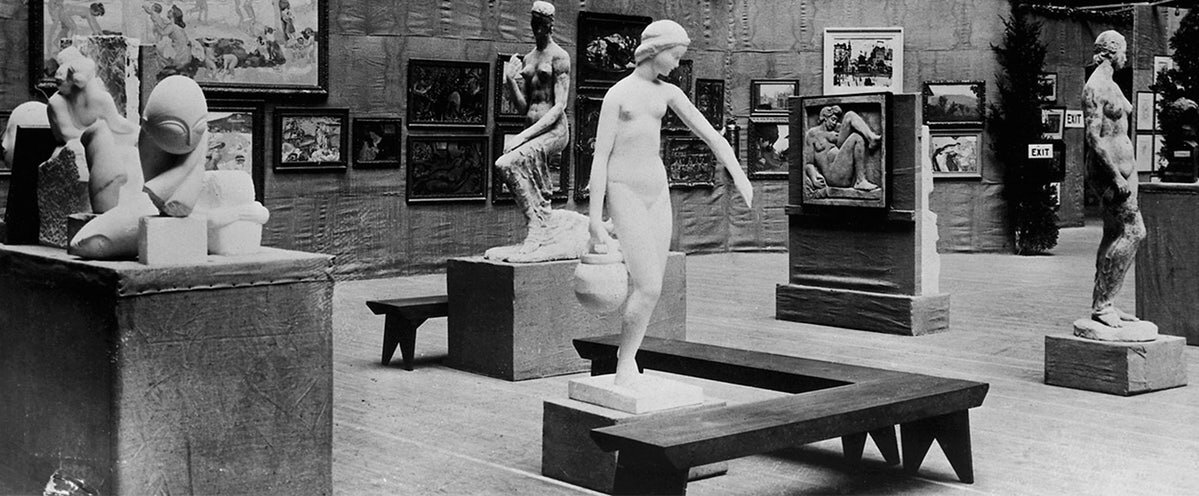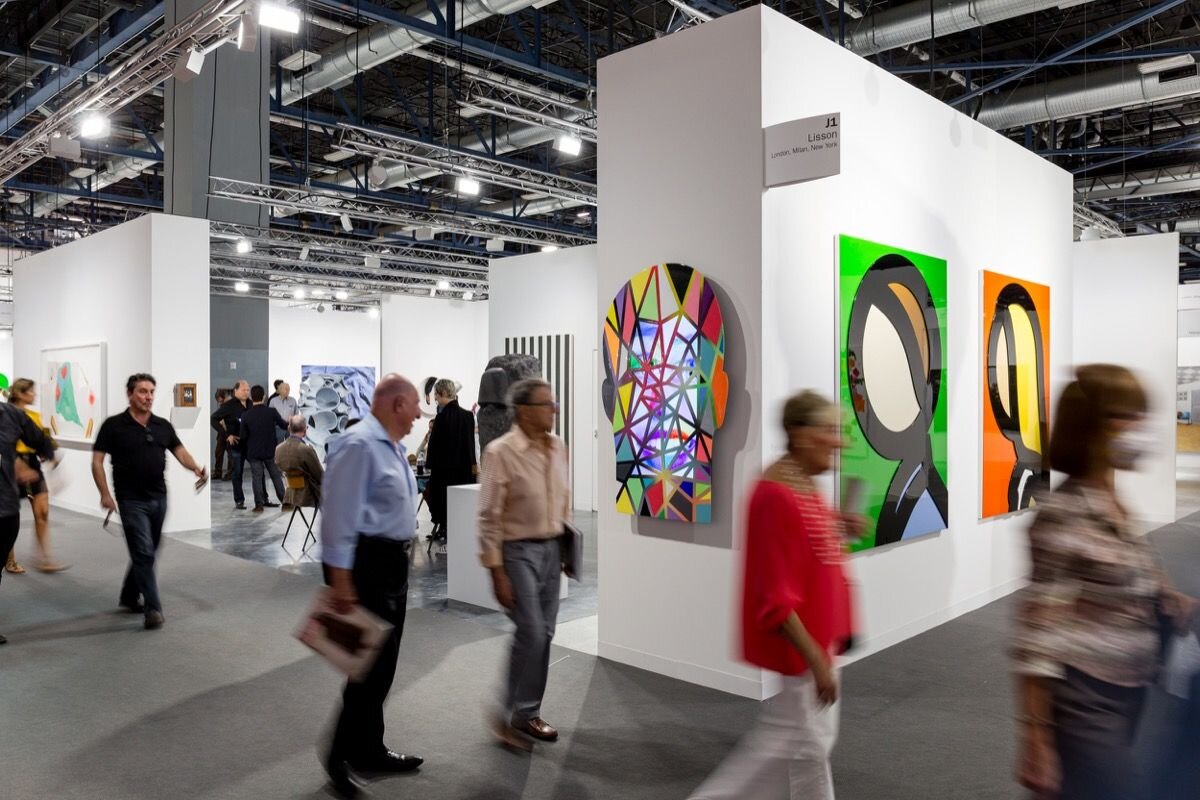I walked through this year’s Current Art Fair three weeks ago and finally got a chance to sit down and do a short write up. What follows is this: a few impressions on art fairs in general, how Richmond’s own fair is unique, and a quick look at some things that were on view.
Current Art Fair, 2019
Art fairs have been the hot new thing for the last 25 years or so.
And they are growing.
Of course, there is the Armory Show up in New York, begun in 1994 but named after the infamous Armory Show of 1913. Art Basel sprang to life in Switzerland way back in 1970 as a kind of artist’s collective, became an art world fixture, and now takes place in Miami as well. From the Frieze in London to newer players like India and Dubai, the Art fair has become a place where galleries can get together in one large warehouse space and show all kinds of work, essentially whatever they choose, without any traditional notions of curatorship. You can think of it as something like a buffet, a mash up, or a collage.
Hence the word fair, like the county fair or carnival: eclectic, varied and temporary, with a roller-coaster here and a fun-house or ferris wheel there. Throw in a prize-winning cow or an enormous homegrown tomato for good measure - anything you want. Not exactly the high-brow modernist notion of the art space as white cube. A bit more like a Las Vegas convention.
But unlike a Vegas convention or county fair, the art fair has become known as a place where the super-rich come to build their collections. Or where they come to see - in person no less - what’s hot around the world in far-flung places like Berlin, New Delhi, Madrid or Beijing. It’s also where galleries come to find new collectors. Represented artists sometimes show up for the same reason, curators to connect everyone, and art students to either mock the circus-like atmosphere or dream of one day participating in it. Some critics use it as an excuse to show off their allergy to commercialism, others as an opportunity to jump on the bandwagon.
I rather like the art fair atmosphere. It shakes things up a bit. Gives us a new format to see stuff we might not have otherwise. Not everyone shares this enthusiasm. I distinctly remember a grad school colleague at the 2010 Armory Show being incensed over some of the prices being quoted, as well as the sometimes gaudy atmosphere. I was mildly amused and entertained. But I also got to see my first Frank Aurbach painting in the flesh, then a Justin Mortimer and a Vincent Desiderio. Finally, that was the day (believe it or not) I discovered Edwin Dickenson through one of his small self-portraits. A rather sober thing to find in that environment.
Edwin Dickinson, Self Portrait, 1950
The nice thing about Current in comparison to a lot of the more established fairs in larger cities is its accessibility to the average art lover (and possible collector) who is of a more modest income, or even the everyday art lover who might be intimidated by the more cosmopolitan atmosphere of events like Art Basel or The Armory Show. Current is smaller, and gallery directors are really present, available, and much more likely to chat with the average person. Artists are often there to talk about what they do, at least more so than at the bigger fairs.
There was a lot of interesting work that caught my eye this year at Current, and while it wouldn’t be possible to give a review of the whole event, I did get a chance to talk to a few directors who let me ask them about the essential philosophy and flavor of their respective galleries. Here are a few short notes:
First off, there was a category at this year’s fair titled RVA Street Art. (Not associated with any particular gallery.) I spoke with Matt Lively, a well-established Richmond artist who had several paintings showing.
He was exhibiting two types of works, the well-known bumble bee pieces and his grittier tar paintings of interiors. Matt told me the bee paintings are like an old pop favorite people are constantly asking him to play. They are light in mood, but still filled with visual wit and intelligence.
Matt Lively, Bee Painting
If the bee paintings are a bit like the Bee Gees we might say the tar pieces are like Matt’s version of Bob Dylan. They are more monochromatic, complex and dark. He pushes the paint around on the surface in these, manipulating the tar between opaque and translucent while orchestrating slight changes in warm and cool.
Matt Lively, Tar Painting
I spoke with Page Bond, owner and director at Page Bond Gallery. Page was first inspired to collect by her aunt who owned a significant body of art which included pieces by Matisse, Picasso and Degas. She looks to show artists whose work is minimal, architectural in its structure, beautiful, and visually refreshing.
Will Berry (Page Bond)
Christian Haub (Page Bond)
Calloway Fine Art and Consulting is a DC based gallery that shows artists it considers to have obtained a high degree of technical accomplishment and whose works convey aesthetic beauty. The presence of the painters hand is important as well.
Maggie Siner (Calloway Fine Art)
Dean Fisher (Calloway Fine Art)
Les Yeux du Monde is a gallery in Charlottesville. Its director, Lyn Warren, obtained her PhD in Art History from UVa in 1994. She is interested in different ways of looking at the world (as the name of the gallery would suggest), and work that has a vital connection to art history. She represents several UVa and VCU professors.
Cate West Zahl (Les Yeux Du Monde)
Shokoe Artspace is a non-profit gallery that seeks to build a total ecosystem for the cultivation of the arts. Besides being a gallery space, Shokoe Artspace also produces a podcast. There are plans for the creation of a critical arts journal as well.
Nicolas Seitz (Shokoe Artspace)
Ian Hess (Shokoe Artspace)
Reynolds Gallery: In 1977 Bev Reynolds came from NY to Richmond with a station wagon full of contemporary art. She founded Reynolds Gallery. I didn't ask if the station wagon still runs, but the gallery remains in the family, and there continues to be a strong connection to the NY art world.
Roy Litchenstein (Reynolds Gallery)
Richard Roth (Reynolds Gallery)
Eric Schindler is Richmond’s oldest gallery dealing in contemporary art. There is no one style that defines the gallery, but Kirsten Gray, the daughter of the original founders, looks for artists who are driven to make work that is honest and sincere.
Miguel Carter-Fisher (Eric Schindler Gallery)
Mark Pehanich (Eric Schindler Gallery)
Candela Gallery is committed to photo-based work and publishing books based on photography. They show primarily well-established artists in the hope of creating a quality critical discourse surrounding the contemporary practice of photography. Every year they host an open call for emerging photographers called UNBOUND. That exhibition takes place in the summer.
David Emit Adams (Candella Gallery)
Willie Anne Wright (Candella Gallery)
Glave Kocen looks to show contemporary art that nevertheless still has a strong element of tradition in it. The aim of the gallery is not to shock or provoke, but to provide a moment of solace for those who come into the gallery. Work shown there is often high key in color and positive in spirit.
Eli McMullen (Glave Kocen)
Josh George (Glave Kocen)
Rob Browning (Glave Kocen)
If you didn’t make it to this year’s fair, keep it in mind for next fall. It’ll be an opportunity to sample a whole variety of different galleries all at once, and Richmond is a great place to get into the art collecting game right now!
Miles Hall is a painter and art educator. He has taught Drawing, Painting, Color Theory, and Modern Art History at Virginia Commonwealth University and Virginia State University. He has an MFA in Studio Art and an MA in Modern and Contemporary Art History Theory and Criticism.
























